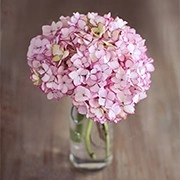About Lilac Bushes

Lilac bushes are captivating garden favorites that bring fragrance and beauty to any landscape.
Here are seven fascinating insights into growing and caring for these stunning plants
1 | Climate for Lilacs
Lilac bushes, including the popular Common or French Lilac (Syringa vulgaris), thrive in cool climates (zones 3–7), with some varieties adapting to warmer regions. They require cold winters to trigger dormancy for blooming. Typically, their blooms grace the spring season, lasting about two weeks.
2 | Sun, Soil, and Fertilizer
Sunlight:
Lilacs flourish in full sun.
Soil: Well-drained, alkaline soil is ideal.
Fertilizer: Use a general-purpose fertilizer in early spring and post-bloom. For enhanced flowering, apply super phosphate or phosphorus-rich fertilizer in early spring.
Lilacs offer a range of fragrances, shapes, colors, and bloom times, allowing for customized choices in gardens.
Discover the 10 Most Delicious Mushrooms You Should Add to Your Diet Today for Flavor and Health Benefits.
10 Surprising and Delightful Facts About Roses That Will Make You Fall in Love with Them Again.
Some Wedding Bouquets With Peonies That Prove Why They're Such a Popular Big-Day Flower!
Learn to grow vibrant tulips with quality bulbs, proper planting, and care tips for lasting spring beauty!
Saffron 101: A Look Into the World’s Most Expensive Spice!
To encourage blooms, consider composting annually and using organic fertilizers with a 3-5-4 ratio. Young plants may take 3–4 years to mature before they yield abundant blooms, but rapid growth often begins around year 4 or 5.
3 | Pruning Lilacs
Lilacs develop buds on old wood, making it crucial to prune immediately after the bloom cycle. Pruning at the wrong time may eliminate the next year’s flowers.
4 | Varieties of Lilac Bushes
Lilac flowers come in diverse forms and colors, from singles to doubles, and shades ranging from violet and pink to yellow.
Below are some popular varieties:
Warmer climates: 'Miss Kim' or 'Blue Skies' thrive in zone 8.
Double flowers: 'Scentara Double Blue' offers stunning blue-toned purple blooms.
Early bloomers: 'Excel' blooms as early as February or March.
Repeat bloomers: 'Josee' produces lavender-pink panicles until frost.
White flowers: 'Madame Lemoine' and 'Angel White' are elegant options.
Pink flowers: 'Miss Canada' showcases rosy pink blossoms.
Yellow flowers: 'Primrose' boasts creamy yellow blooms.
Picotee flowers: 'Sensation' displays white-edged reddish-purple flowers.
The Dirt: Lilacs | The Dirt | Better Homes & Gardens
Video by Better Homes and Gardens
5 | Lilac Origins
Lilacs originated in Eastern Europe, specifically in the mountainous regions of Bulgaria, Croatia, and surrounding areas. Cultivated by the Turks for centuries, these plants were introduced to Western Europe in the 1500s and eventually made their way to North America. They were cherished in the gardens of historical figures such as George Washington and Thomas Jefferson.
6 | Lilac Floral Arrangements
When creating arrangements, select stems with at least 75% open blooms. Replace vase water daily and mist the petals to extend their freshness. This practice ensures vibrant and fragrant displays.
7 | A Whole Island of Lilacs
Dear Lykkers! Mackinac Island, Michigan, boasts over 100 lilac varieties. The island’s cold winters, warm summers, and limestone-rich soil provide ideal growing conditions. The oldest lilacs on Mackinac date back to the 1870s, reaching heights of 20 feet. The annual Lilac Festival in June celebrates these magnificent blooms with parades, festivities, and more.

Bonus | A Book of Lilacs
For inspiration, Lilacs: Beautiful Varieties for Home and Garden by Naomi Slade offers tips and insights into growing these vibrant flowers. Accompanied by stunning photography, the book captures the timeless allure of lilacs.

 · Plant Team
· Plant Team